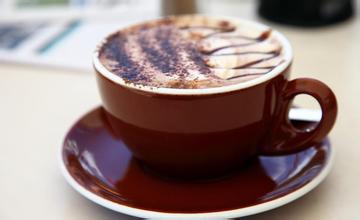Water content during coffee roasting-Starbucks Italian roasted coffee beans
Water content during coffee roasting-Starbucks Italian roasted coffee beans
With the rapid heating of coffee beans during roasting, water begins to escape from the bean surface and evaporate. The escape rate depends on temperature, bean quantity, bean density and air circulation, while the standard rate of a normal roaster is 5-7 minutes when the water content of coffee beans is reduced from 11% to 2%. Coffee beans at the initial stage of roasting sometimes turn slightly white or milky white, then turn orange, and eventually become cinnamon in the later stage of roasting. This early process is often referred to as the "drying" stage.
In addition to the drying process, the aroma, acidity and bitterness of coffee (caused by the decomposition of chlorogenic acid and sugars) begin to emerge at this stage, which is also important because these are the main flavors of coffee products. This part of baking also initiates another set of chemical changes, the Maillard reaction (also known as the Mena reaction Maillard reaction).
Maillard reaction is a browning reaction that occurs when amino acids interact with sugars. The reaction can be carried out at any temperature, but high temperatures, especially those above 150℃, will greatly speed up the reaction. This series of reactions themselves are extremely complex, and you just need to remember that delicacies such as fried meat, toast or toast are mostly thanks to Maillard's reaction. Similarly, the brown of roasted coffee comes from it.
Use your senses: eyes, nose, ears, and mouth to learn more about the characteristics of coffee. Master the perfect baking curve to adjust and record the dehydration status of coffee roasting, how to use a few percent of the capacity of the coffee roasting boiler, how to adjust the hot air exhaust air door, whether the coffee can be copied and roasted by the original curve, the temperature recovery point of coffee and so on.
When paying attention to the process of coffee change, the baker can use the above factors to judge and design the baking curve. To put it simply: when the raw beans go directly into the roaster, how long will it take to warm up before the curve on the thermometer begins to climb slowly up. When the coffee beans are dehydrated and turn orange, how long does it take to produce the first explosion, reach the ideal color card, or reach the baking level of the second explosion? The roaster needs to take how many baking samples to judge the time of the coffee.

Important Notice :
前街咖啡 FrontStreet Coffee has moved to new addredd:
FrontStreet Coffee Address: 315,Donghua East Road,GuangZhou
Tel:020 38364473
- Prev

Where is the best coffee in the world?
Annual production: 45,000 tons If I could only drink one kind of coffee in the future, I would choose Kenyan coffee. Dear Coffee, I Love You by Brian Jones Kenya's coffee history is not long, the early twentieth century began to introduce Arabica coffee varieties, and later more cultivated from Brazil Bourbon varieties. Early English
- Next

Description of Flavor of African Coffee Bean Variety treatment method in Taste producing area
Description of flavor of African coffee bean varieties in taste producing areas introduction to Catuai: a hybrid of Kaddura and Mondonovu, the reason for hybridization is that the Mondonova tree is too high, so it crosses with Kaddura of tree height. Kaduai has high yield and strong adaptability to the environment. But the harvest life is short, the taste is monotonous and lacks the thickness of alcohol. Amareo (Amarello):
Related
- What brand of black coffee is the most authentic and delicious? what are the characteristics of the flavor of the authentic Rose Summer Black Coffee?
- Introduction to the principle and characteristics of the correct use of mocha pot A detailed course of mocha pot brewing coffee is described in five steps.
- Which is better, decaf or regular coffee? how is decaf made?
- How much is a bag of four cat coffee?
- How about four Cat Coffee or Nestle Coffee? why is it a cheap scam?
- Which is better, Yunnan four Cats Coffee or Nestle Coffee? How about cat coffee? is it a fake scam? why is it so cheap?
- How about Cat Coffee? what grade is a hoax? which instant coffee tastes better, four Cat Coffee, Nestle Coffee or G7 coffee?
- Process flow chart of coffee making-Starbucks coffee making process what coffee tastes good at Starbucks
- The top ten best coffee beans in the world Rose summer coffee or Tanzanian coffee tastes good
- Yunnan four cat coffee is good to drink?_four cat coffee is a big brand? four cat blue mountain coffee is fake?

